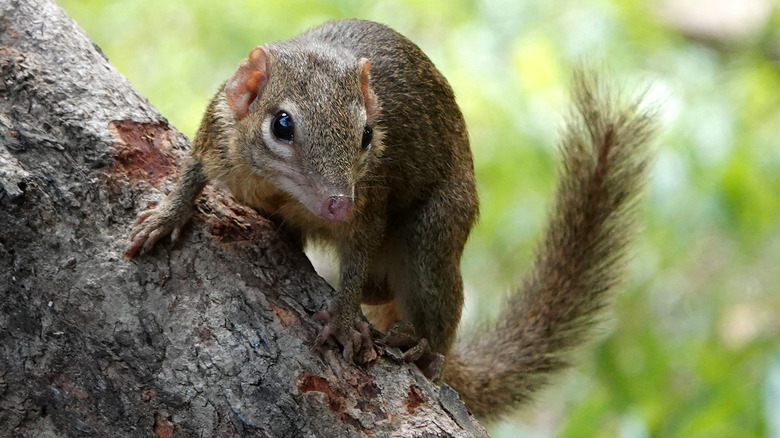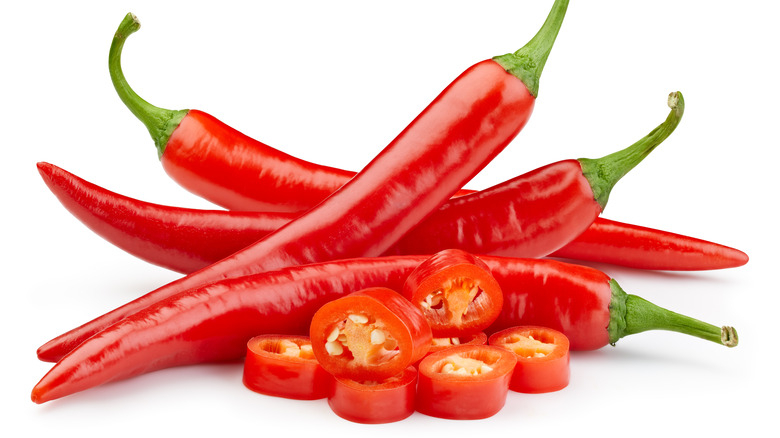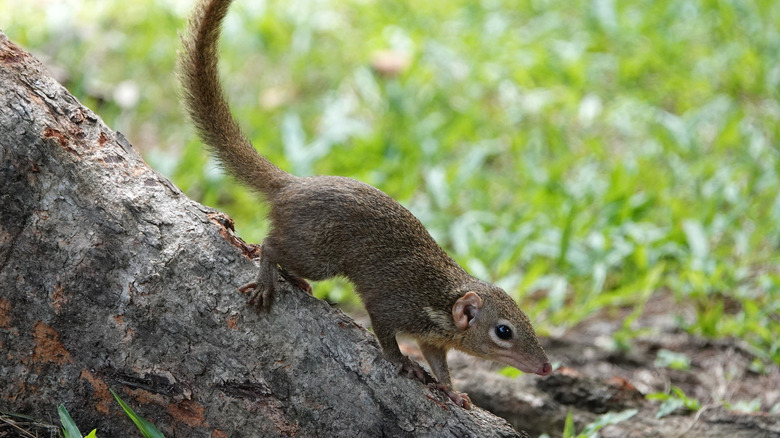Humans And Tree Shrews Share An Unexpected Eating Habit
Although not everyone can take it, many people like some spice in their food. Aside from hot sauce, another common way to add some heat to your food is to cook it with chilis or with chili oil. Even if at first spicy flavors are too hot for some people to eat, it's possible to train your tongue to withstand the burn. Eating spicy food also releases endorphins in the human brain. That gets us hooked on the hot rush and makes less spicy food seem less satisfactory, as Thrillist explains.
Even though food cravings involving spice are common, it might not make much sense from a biological perspective for humans to mix a little pain into what they eat. In nature, eating capsaicin — the naturally-occurring chemical compound in peppers that makes them spicy (via U.S. Pharmacist) — is quite rare. Capsaicin, after all, is a close cousin to the pepper spray used for self-defense. Spraying just a little could cause extreme eye irritation and sometimes even blindness.
Science has now revealed that there is one tiny relative of primates, the tree shrew, that just can't get enough of the stuff, as Australian Geographic explains. But before you decide to go tongue-to-tongue with these little critters in a hot pepper contest, the reason that tree shrews seem to handle capsaicin so well is not what you might expect.
Tree shrews evolved with a plant that produces capsaicinoids
Joining humans and birds, the latter of which lack the receptors to detect capsaicin in what they eat, squirrel-like tree shrews are the only other mammals known to not just tolerate a spicy meal but prefer it, based on reporting from Smithsonian Magazine. This is likely due to the fact that the tiny natives of Southeast Asia (who aren't shrews at all but a close cousin to primates) evolved around Piper boehmeriaefolium — not an actual chili, but a plant that also produces large amounts of capsaicin.
When presented with a menu of some other kind of vegetation to eat alongside some Piper boehmeriaefolium, the tree shrew not only eats it, they seem to prefer the Piper boehmeriaefolium over the less spicy alternative. Moreover, there's evidence that tree shrews can tolerate capsaicin much more so than other mammals. So, like humans, is this a case of exposure helping the tree shrew manage the kick, or is there something else entirely at play that explains why tree shrews can stand the heat?
Tree shrews are likely immune to capsaicin
Unlike your uncle who can down two dozen spicy chicken wings at a time only because he's developed a tolerance through prolonged exposure, tree shrews are believed to be evolutionarily immune to capsaicin, and therefore, they're not able to feel its effects very strongly if at all. This is due to a slight mutation in the TRPV1 ion channel, otherwise known as the capsaicin sensor. Tree shrews have a TRPV1 ion channel, but a difference in a single amino acid prevents capsaicin from bonding to their pain receptors, according to a study published in PLOS Biology.
Tree shrews have one other evolutionary superpower that might elicit some envy in your uncle, especially if he likes to drink a beer with his chicken wings: Tree shrews can't get drunk, as Australian Geographic notes. This phenomenon is likely explained by biology as the creatures consume the Bertam palm plant, a plant with flowers containing a naturally occurring 3.8% alcohol, according to a study published on the PNAS website. Although that's a bit less than a typical 12-ounce beer (per the National Institute of Alcohol and Alcoholism), these animals weigh much less than your uncle and eat a ton of the Bertam palm plant each night, seeming to experience no hangovers whatsoever.


